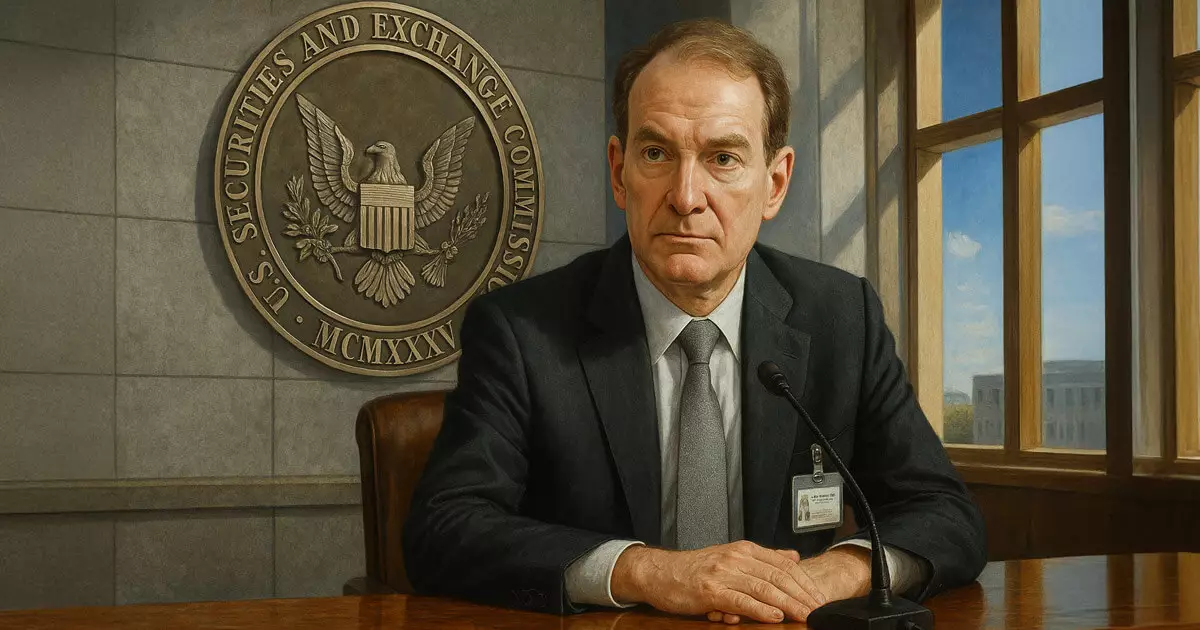The recent announcement by SEC Chairman Paul Atkins marks a transformative shift in how the regulatory body will approach digital assets in the United States. Stepping away from the aggressive and often punitive enforcement strategies of the past, Atkins signifies a pivotal moment where innovation is recognized not as a threat, but as an exciting frontier to explore. For too long, the crypto space has been trapped under a suffocating cloud of ambiguity, and Atkins is striving to clear the air, creating a renewed hope that could invigorate this beleaguered market.
Rethinking Relationships
Atkins’ call to action against the infamous “shoot-first-and-ask-questions-later” mindset reveals a startling realization: an adversarial posture has been detrimental not only to crypto firms but also to the SEC’s own authority and credibility. His criticism of the agency’s prior approach sheds light on its failure to cultivate a cooperative atmosphere where all stakeholders can engage without fear. By promising to foster open dialogues with the industry while putting an end to misguided enforcement tactics, Atkins is effectively laying the groundwork for a relationship built on trust rather than intimidation.
Clarifying the Path Ahead
It is encouraging that Atkins is committed to developing precise rule proposals that will address and accommodate the unique nature of the crypto sector. The call to action to reform outdated processes is not just timely but necessary. The world of blockchain and cryptocurrencies evolves at breakneck speed, and a regulatory structure designed around archaic financial principles cannot hope to capture its essence. By empowering registered firms to custody and trade both traditional securities and digital assets under one regulatory umbrella, the SEC is making way for a seamless integration of financial services that can bolster growth and innovation for all market participants.
From Confusion to Collaboration
Atkins’ ambitious vision not only aims to demystify the regulatory landscape but also seeks to dismantle barriers that have stymied collaboration between technology innovators and regulatory authorities. The decision to dismantle the FinHub is a controversial but necessary step towards embedding innovation throughout the agency. Rather than having a compartmentalized approach, innovation needs to be ingrained within the fabric of the entire SEC. This holistic strategy will ensure that regulators remain closely attuned to the rapid advancements in the digital asset space.
The Promise of a ‘Super-App’ Future
Atkins’ mention of a “super-app” future introduces an exhilarating possibility: a consolidated platform that can provide integrated solutions across varying financial services. This ambition reflects a progressive understanding of consumer expectations and market dynamics. The convergence of digital assets with traditional financial instruments within a single regulatory framework could lead to lower operational costs, increased efficiency, and a consumer experience that is both streamlined and rewarding. The SEC’s willingness to explore such a future demonstrates a bold optimism that has been sorely lacking in recent years.
While the details of the specific rule proposals are yet to be unveiled, Atkins’ leadership appears poised to cultivate an invigorated atmosphere ripe for growth. The implications of such changes could extend far beyond the crypto industry, offering a glimmer of hope that the regulatory environment might finally catch up with the innovative spirit of this new digital age.
















Leave a Reply